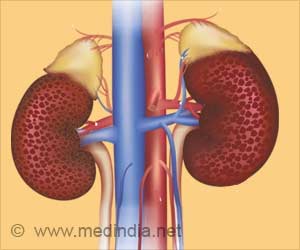New renal replacement therapy cases rising due to nephrosclerosis urge the need for effective strategies to reduce the burden of nephrosclerosis.

The key findings published in the journal Nephrology are that age-standardized incidence rates of RRT due to diabetic nephropathy significantly declined in both sexes, although not as steeply as the decline seen for chronic glomerulonephritis.
The incidence rate of patients requiring RRT due to nephrosclerosis increased by 132% for men and 62% for women from 2006 to 2020, and the age-standardized incidence rate of RRT due to nephrosclerosis also increased considerably during this period in both sexes.
Trends in the Incidence of Renal Replacement Therapy by Chronic Kidney Disease
Age-specific incidence rates of RRT attributed to nephrosclerosis also increased in many age groups from 2006 to 2020, suggesting that the increase in the number of patients with nephrosclerosis is not only due to increasing numbers of older people, but also, because of increasing age-specific incidence rates.Understanding recent trends in RRT incidence by disease type will help establish strategies to lower these rates in the general population.
Using data from the Japanese Society of Dialysis Therapy registry and national census, the study revealed that age-standardized incidence rates of RRT due to nephrosclerosis increased significantly, by 3.3% (95% confidence interval (CI): 2.9 to 3.7) and 1.4% (95% CI: 0.8 to 1.9) per year for men and women, respectively.
The average annual percentage change of chronic glomerulonephritis at -4.4% (95% CI: -5.3 to -3.8) for men and -5.1% (95% CI: -5.5 to -4.6) for women) and diabetic nephropathy at -0.6% (95% CI: -0.9 to -0.3) for men and -2.8% (95% CI: -3.1 to -2.6) for women significantly decreased from 2006 to 2020.
Advertisement
While our data cannot provide a definitive reason for the decreased incidence rates of RRT due to diabetic nephropathy, two factors — a stabilized trend in type 2 diabetes prevalence in the general population, and recent developments in strategies to reduce the progression of diabetic nephropathy — may have contributed.
Advertisement
Source-Eurekalert











